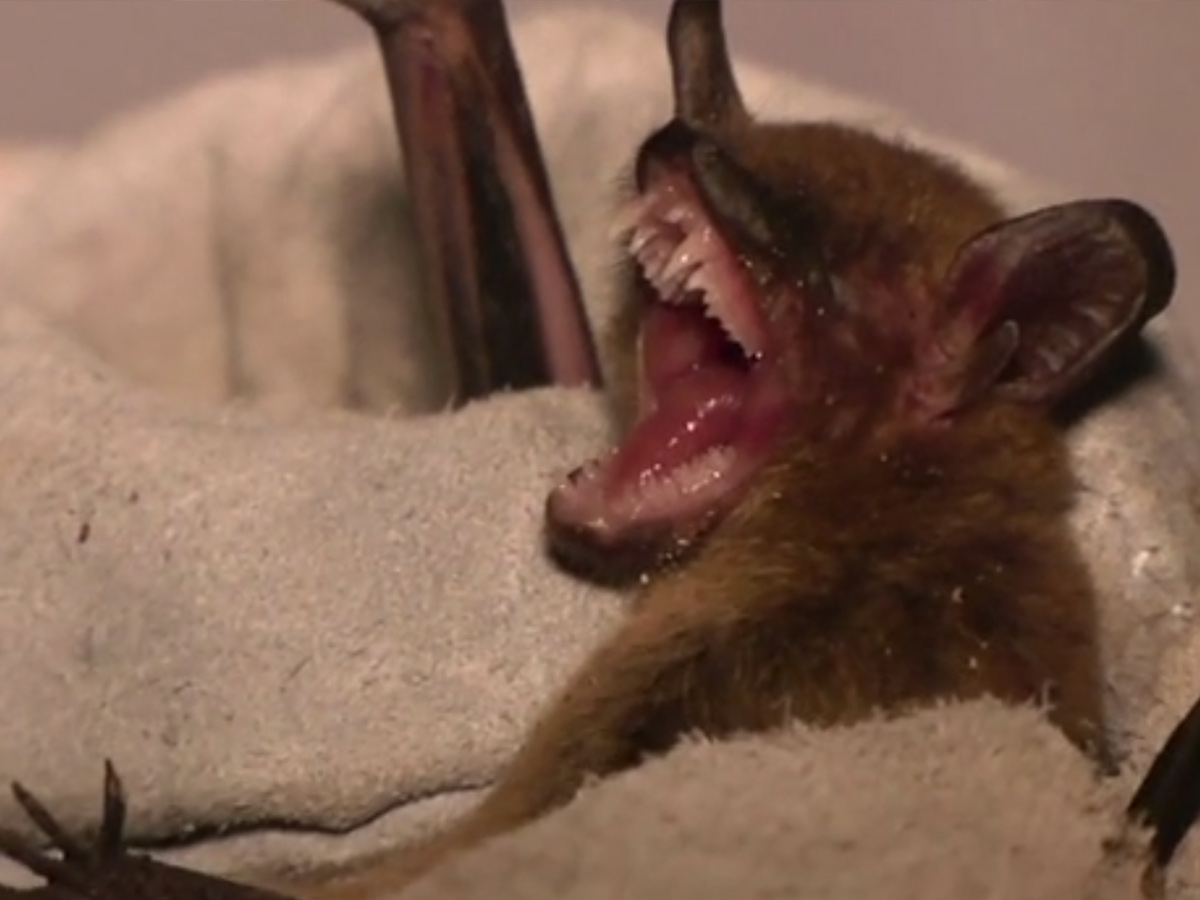Bats
I never claimed to be a bat expert, but when I was called one afternoon to check out a large colony from a nearby residence, I jumped at the opportunity.
I mean, how often does one get to go play with a bunch of bats? My oldest son (nine at that time) begrudgingly agreed to accompany me on yet another escapade. Marshall was well aware that I was a "snake guy" not a "bat guy" and expressed some misgivings about our involvement in the project. The homeowner didn't want to hurt the bats, but they were making a bit of a mess on the eaves of her house and in the attic. After assessing the situation (40-50 bats lining a small section of the attic wall), we formulated our plan and raced back to the house for supplies. It was easy: pluck the bats off the wall of the attic and place them in a large "tupperware" container for relocation. My trusty sidekick, Marshall, would be standing behind me armed with a butterfly net to catch any animals that took flight.
I put on a hefty glove and began carefully removing the somewhat torpid bats off the wall, placing them in the container. As I removed about the fourth bat, the inevitable happened. A flock of bats fluttered up into the crawlspace like a covey of quail. After a moment of indecision, I yelled for Marshall to start the netting process. Upon receiving no response, I turned to find Marshall gone and the net lying limply on the floor of the attic.
Bats are extremely beneficial to human beings. According to the book "Bats of the United States" by Michael J. Harvey et. al., a single bat can consume 4500 small flying insects in a single night. Imagine what a colony of a thousand bats individuals could accomplish. If bats were not present, we would have to spray far more insecticide into our skies to control mosquitoes and other pesky bugs.
Bats are the only true flying mammals. Similar to those of a human arm and hand, the extremely elongated finger bones are covered with membranous skin forming a wing. Bats are spectacular aerialists, swooping and maneuvering to catch insects on the wing. They use echolocation (sonar) to navigate and locate their prey. They emit pulses of high frequency sound and listen to the echoes that bounce off various objects sensing what is in their paths. Although bats are primarily nocturnal, they can often be seen at dusk, preparing for night flight. They spend days in attics of houses, barns, or hollow trees. Common predators of bats include snakes, owls and raccoons.
Because of past misconceptions, bats are still regarded as unwanted pests by some people. Bats are beneficial because they play important roles in pest control, seed dispersal, and pollination. Many people have even warmed-up to the idea of having bats in their attics, barns and yards . Numerous plans for artificial bat dwellings (bat houses) are available on the internet and in outdoor magazines.

Marshall and I did manage to catch many of the bats in that attic. After a bit of research, I determined they were big brown bats Eptesicus fuscus, a harmless and beneficial species common in the the lowcountry. In fact, this group turned out to be a maternity colony with lots of bat "pups." I relocated the bats many miles away, in an old, dilapidated farmhouse where I had seen many bats in the past. I asked my neighbor to place hardware cloth over the gaps in the eaves of her house so no additional bats could get back inside and as far as I know that solved the problem.
Tags: mammals